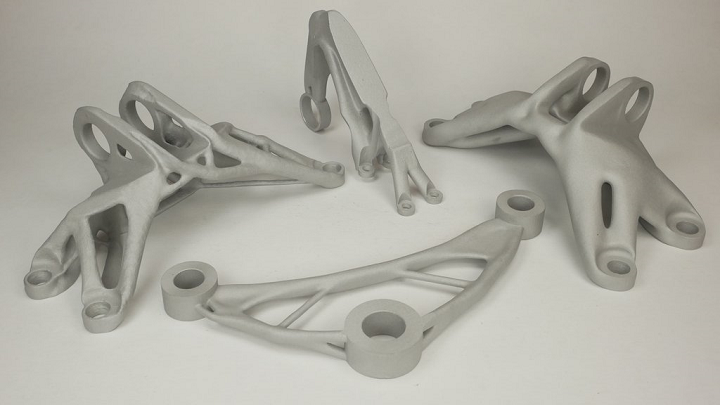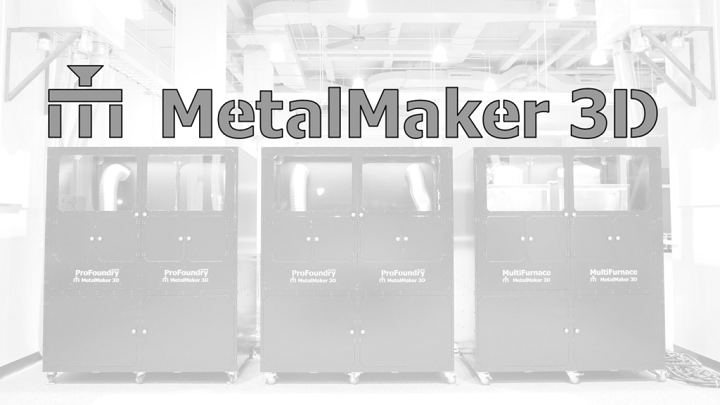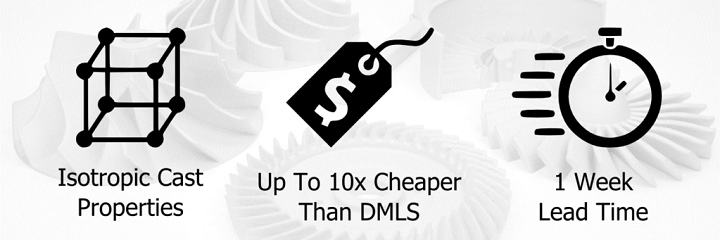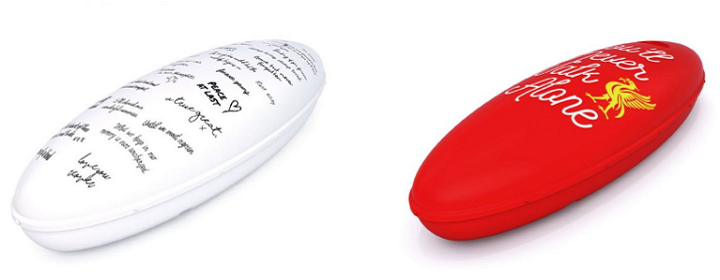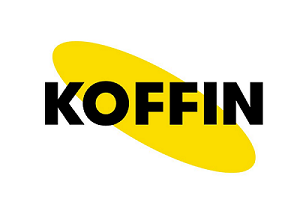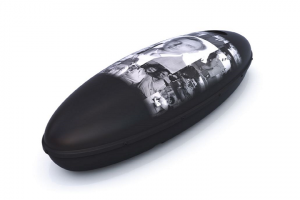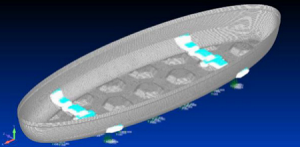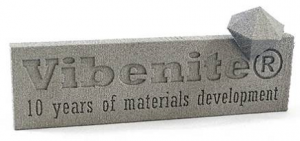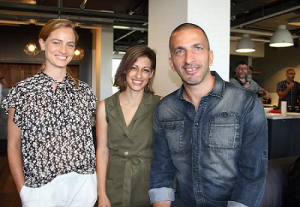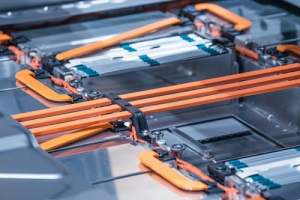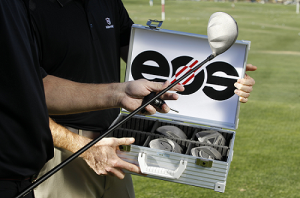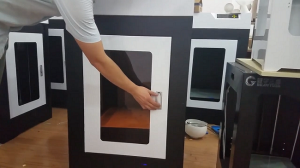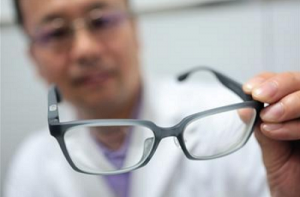We’re starting with more formnext announcements on today’s 3D Printing News Briefs, then moving on to classes and workshops. Verashape is launching a new 3D printer at next week’s event in Frankfurt, while Cubicure will be presenting its new CSS software solution for 3D printing. In the meantime, SelfCAD is releasing an updated version of its software. Finally, the EU-funded METALS project has published an online 3D printing course, and the people behind a new program for 3D printed construction technology in India are organizing a workshop on construction 3D printing.
VSHAPER 500 Med Launching at formnext
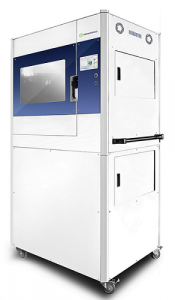 Just like Polish 3D printer manufacturer Verashape introduced its 5-Axis VSHAPER 3D printer at last year’s formnext, the company is taking advantage of the 2018 event in Frankfurt, estimated to gather a record number of participants in its largest space yet, to launch its newest 3D printer – the VSHAPER 500 MED, which was developed to meet the growing demands for spatial printouts used in the medical field. The VSHAPER 500 MED, which includes a vacuum table, a closed chamber with UV light, and silver-based antibacterial coatings, is perfect for creating precise, high quality 3D printed medical models. The 3D printer also has a 420 x 420 x 400 mm workspace, along with an extruder with two V-JET heads.
Just like Polish 3D printer manufacturer Verashape introduced its 5-Axis VSHAPER 3D printer at last year’s formnext, the company is taking advantage of the 2018 event in Frankfurt, estimated to gather a record number of participants in its largest space yet, to launch its newest 3D printer – the VSHAPER 500 MED, which was developed to meet the growing demands for spatial printouts used in the medical field. The VSHAPER 500 MED, which includes a vacuum table, a closed chamber with UV light, and silver-based antibacterial coatings, is perfect for creating precise, high quality 3D printed medical models. The 3D printer also has a 420 x 420 x 400 mm workspace, along with an extruder with two V-JET heads.
“3D Printing technology is becoming an increasingly valuable tool in medical diseases treatment, fighting disabilities and increasing the effectiveness of complicated surgeries,” said Marcin Szymański, the company’s VSHAPER Product Manager. “The technology is already used to aid the creation of dental crowns, bone parts, blood vessels and hip-joints prosthetics.”
To see the new VSHAPER 500 MED 3D printer for yourself, visit Verashape at formnext from November 13-16 at Stand 3.1-G88.
Cubicure Presenting CSS Software Solution at formnext
 Cubicure, a spin-off company of TU Wien, will be presenting its new, platform-independent software solution for additive manufacturing data preparation at formnext. The software, called CSS for Cubicure Support & Slice, can generate complex support geometries, as well as edit STL files. The comprehensive tool allows users to generate, edit and repair 3D models, in addition to easily exporting layer information for the 3D printing process. Developed with graphic software provider DeskArtes and based on 3Data Expert, CSS is applicable for DLP and SLA (stereolithography), and Cubicure’s own Hot Lithography technology, and also comes with an intuitive import function of several surface models, a user-friendly GUI, and data conversion tools.
Cubicure, a spin-off company of TU Wien, will be presenting its new, platform-independent software solution for additive manufacturing data preparation at formnext. The software, called CSS for Cubicure Support & Slice, can generate complex support geometries, as well as edit STL files. The comprehensive tool allows users to generate, edit and repair 3D models, in addition to easily exporting layer information for the 3D printing process. Developed with graphic software provider DeskArtes and based on 3Data Expert, CSS is applicable for DLP and SLA (stereolithography), and Cubicure’s own Hot Lithography technology, and also comes with an intuitive import function of several surface models, a user-friendly GUI, and data conversion tools.
Dr. Robert Gmeiner, the CEO of Cubicure GmbH, said, “With this software solution Cubicure offers another important product for the additive manufacturing value chain.”
You can visit Cubicure Booth G59 in Hall 3.1 at formnext.
SelfCAD Releasing Updated Software
 Browser-based 3D design platform SelfCAD, founded in 2015, combines 3D modeling, slicing, and several other tools and functions in one easy program. Now, SelfCAD has launched an updated version of its software, which was developed based on users’ expectations of powerful but easy to use 3D modeling software. Version 2.0 of the modeling software includes more capabilities, like a 3D sketching toolset to increase the user’s level of freedom, and simplified design, including an intuitive user interface with a less confusing toolbar that makes it easy to use, even for beginners.
Browser-based 3D design platform SelfCAD, founded in 2015, combines 3D modeling, slicing, and several other tools and functions in one easy program. Now, SelfCAD has launched an updated version of its software, which was developed based on users’ expectations of powerful but easy to use 3D modeling software. Version 2.0 of the modeling software includes more capabilities, like a 3D sketching toolset to increase the user’s level of freedom, and simplified design, including an intuitive user interface with a less confusing toolbar that makes it easy to use, even for beginners.
Additional features include new selection modes, a simple objects view with both light and dark modes, a measurement option for easier design of accurate models, new sketching brushes, and new shapes. What’s not new is that SelfCAD, with a price of $14.99 a month or $139.99 a year after a 10-day free trial.
METALS Project Publishes Online 3D Printing Course
 The three-year MachinE Tool Alliance for Skills (METALS) project, funded by the European Union under the Erasmus+ program and coordinated by CECIMO, ended last week, but not before releasing a free, online course about the fundamentals of AM. The project was characterized by a comprehensive partnership across Germany, Italy, and Spain, with a goal of increasing the competitiveness of Europe’s machine tool industry by providing the necessary skills to benefit from new disruptive technologies, such as 3D printing. The e-learning course, which is available in English, German, Italian and Spanish, intends to support the development of the AM workforce, and includes 27 learning units divided along three main areas: knowledge of AM, work-process, and entrepreneurship.
The three-year MachinE Tool Alliance for Skills (METALS) project, funded by the European Union under the Erasmus+ program and coordinated by CECIMO, ended last week, but not before releasing a free, online course about the fundamentals of AM. The project was characterized by a comprehensive partnership across Germany, Italy, and Spain, with a goal of increasing the competitiveness of Europe’s machine tool industry by providing the necessary skills to benefit from new disruptive technologies, such as 3D printing. The e-learning course, which is available in English, German, Italian and Spanish, intends to support the development of the AM workforce, and includes 27 learning units divided along three main areas: knowledge of AM, work-process, and entrepreneurship.
“Training and education are important elements for the industrialisation of additive technologies in Europe, which is the objective of CECIMO,” said Filip Geerts, CECIMO’s Director General. “With METALS, learners will be able to access relevant online knowledge at no cost and start building their competences to interact with AM. Coupled with on-hands training, which remains essential, initiatives like METALS are useful to increase the overall awareness of what AM concretely is and entails.”
National Workshop in India on 3D Printing Construction
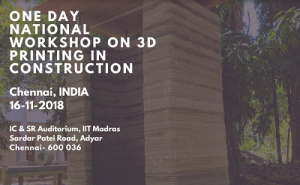 Indian 3D printing startup Tvasta Manufacturing Solutions, based out of Bangalore and Chennai, is a design and manufacturing organization that specializes in industrial 3D printing. The startup, founded by a group of alumni from the Indian Institute of Technology Madras, developed India’s first 3D printed concrete structure in collaboration with the IIT Madras Civil Department. Now, Tvasta and IIT Madras are organizing a national workshop, to be held in Chennai on November 16, all about 3D printing in construction.
Indian 3D printing startup Tvasta Manufacturing Solutions, based out of Bangalore and Chennai, is a design and manufacturing organization that specializes in industrial 3D printing. The startup, founded by a group of alumni from the Indian Institute of Technology Madras, developed India’s first 3D printed concrete structure in collaboration with the IIT Madras Civil Department. Now, Tvasta and IIT Madras are organizing a national workshop, to be held in Chennai on November 16, all about 3D printing in construction.
The objective of the conference is to present how construction 3D printing has the potential to majorly boost the country’s affordable housing sector. Many reputable speakers from around the world, including academic and industry experts, have been invited to speak about developments in automation, specialized concrete mixes, structural design, and other topics during the workshop. The conference will be held in the IC & SR Auditorium at IIT Madras.
Discuss these stories and other 3D printing topics at 3DPrintBoard.com or share your thoughts in the Facebook comments below.

